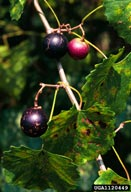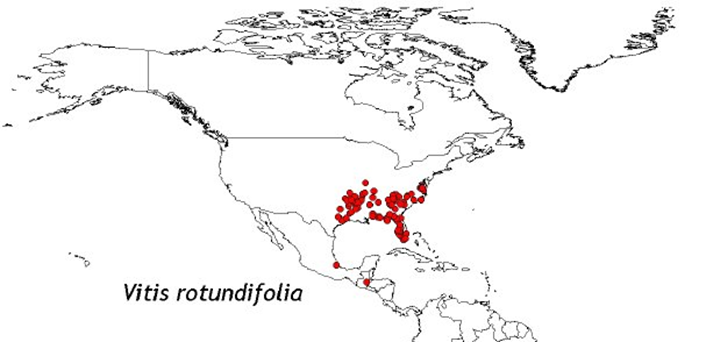Used in:
- Wine is mentioned 31 times
- Grapes specifically
- II Nephi 8:72 [18:37] (parable)
- II Nephi 8:74 [18:39] (parable)
- III Nephi 6:28 [14:16] (metaphor)
- Wine press
What does the Book of Mormon state?
- Wine and at least one wine press was used by the Nephites
- Note: Wine does not necessarily come from grapes
At face value - Did grapes exist in the New World?
Statement
- Wild grapevines have had a unique cultural significance for the indigenous groups of Mexico for thousands of years. The Aztecs named the grapevine berry "acacholli" and likely maintained wild vines as an important source of food and medicine (Franco-Mora and Cruz-Castillo 2012). Fruit from the wild grapevines was harvested to make juice, raisins and jelly. The leaves were used for industrial and medicinal purposes to treat skin eczema, swollen eyes, fevers, as appetite stimulants and to treat athlete's foot (CONAFRUT 1973).
- https://www.researchsquare.com/article/rs-322673/v1.pdf
Assessment
- Grapes are endemic to Mesoamerica
Additional Material

- Distribution (showing native populatons in Mexico and Guatemala)

- Balche
- Balche, an alcohol beverage similar to mead, was made from fermented honey and the bark of the Balche tree, hence its name. It was traditionally brewed in a canoe. The drink was known to have entheogenic properties, and was consumed in medicinal and ritual practices. The hallucinogenic properties come from the alkaloid bark of the leguminous Balche tree (Lonchocarpus violaceus), although whether the hallucinogens came from the bark or the honey, which beekeepers would harvest after placing the nests near the trees, remains uncertain.
- http://en.wikipedia.org/wiki/Stingless_bee
- Wine
- Wine was made from honey and water and certain tree roots. Celebrations and festivities with this kind of partying would produce a lot of drunken men. The women would watch with stoicism and be there to carry the man home after the celebrations were over and the men so drunk, they did not know what they would be doing. Like all drunken people, some of the Maya would get into fights, create quarrels, sneak out to sleep with somebody else's wife and have a great spree. Usually they would spend everything they had acquired through months of hard work in a few days of such drunken festivities.
- http://ambergriscaye.com/earlyhistory/3.html
- Cacao Wine
- The famous Swedish botanist, Linnaeus, is the one who gave the tree and its fruit it wondrous name Theobroma cacao in Latin, Theobroma meaning "food of the gods." When the fruit has a warty skin, this marks it as belonging to the very delicious and aromatic criollo variety from Mesoamerica. Juicy pulp surrounding 30 to 40 almond-shaped seeds or "beans" fills each pod. It is this sweet pulp, with as much as 15% sugar, that we think first attracted our ancestors to the plant and eventually led to its domestication. Fermentation of ripe fruit occurs naturally, and produces a 5 to 7% alcoholic beverage. In fact, this is the way that the beans are freed from the pod in modern chocolate production. The Spanish chroniclers observed that native peoples along the Pacific coast of Guatemala delighted in a mildly alcoholic beverage, which they made by piling cacao fruit into their dugout canoes and letting it ferment there...Such vessels from Honduras are among some of the earliest pottery yet found anywhere in Mesoamerica, dating back to around 1400 B.C. They preceded the first urban communities of the Olmecs, centered on the Gulf Coast of what are now Mexico's Veracruz and Tabasco provinces. Vessels of the long-necked jar type from Puerto Escondido tested positive for theobromine, which is the fingerprint compound for cacao since the compound only occurs in chocolate fruit and beans in Mesoamerica. The style of the vessel was another give-away or advertisement of its contents-it had the shape and characteristic ridges and indentations of the cacao fruit. What we propose, based on the chemical and archaeological evidence, is that the jar was once filled with a fermented chocolate beverage made from ripe chocolate fruit.
- http://www.penn.museum/sites/biomoleculararchaeology/?page_id=145


